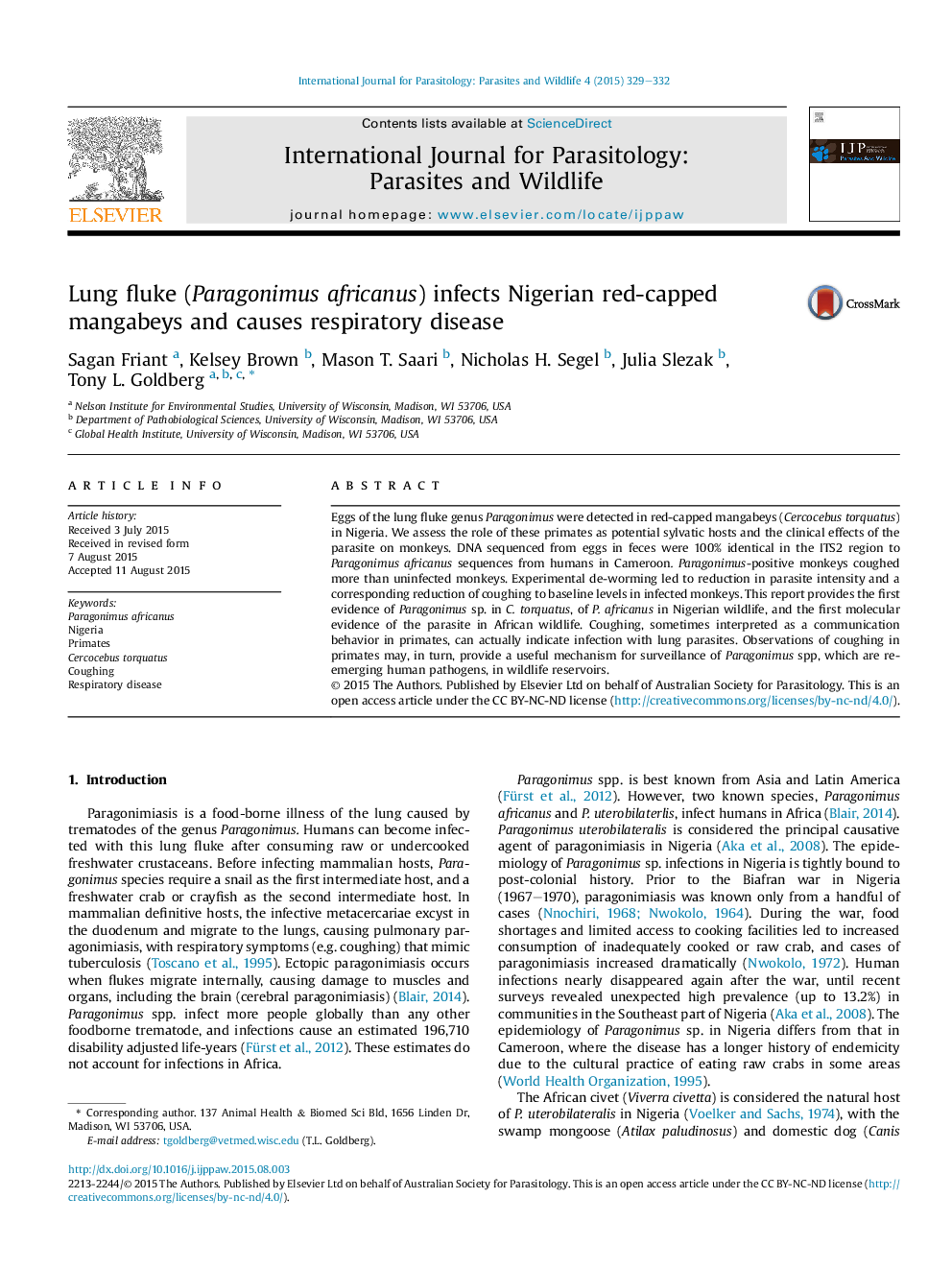| Article ID | Journal | Published Year | Pages | File Type |
|---|---|---|---|---|
| 2055191 | International Journal for Parasitology: Parasites and Wildlife | 2015 | 4 Pages |
•We provide molecular evidence of Paragonimus sp. infection in African wildlife.•P. africanus in primates is 100% identical to humans at the ITS2 region.•Coughing in wild primates can indicate infection with lung flukes.•We offer a method for surveillance of wildlife for potentially zoonotic lung flukes.
Eggs of the lung fluke genus Paragonimus were detected in red-capped mangabeys (Cercocebus torquatus) in Nigeria. We assess the role of these primates as potential sylvatic hosts and the clinical effects of the parasite on monkeys. DNA sequenced from eggs in feces were 100% identical in the ITS2 region to Paragonimus africanus sequences from humans in Cameroon. Paragonimus-positive monkeys coughed more than uninfected monkeys. Experimental de-worming led to reduction in parasite intensity and a corresponding reduction of coughing to baseline levels in infected monkeys. This report provides the first evidence of Paragonimus sp. in C. torquatus, of P. africanus in Nigerian wildlife, and the first molecular evidence of the parasite in African wildlife. Coughing, sometimes interpreted as a communication behavior in primates, can actually indicate infection with lung parasites. Observations of coughing in primates may, in turn, provide a useful mechanism for surveillance of Paragonimus spp, which are re-emerging human pathogens, in wildlife reservoirs.
Graphical abstractFigure optionsDownload full-size imageDownload as PowerPoint slide
